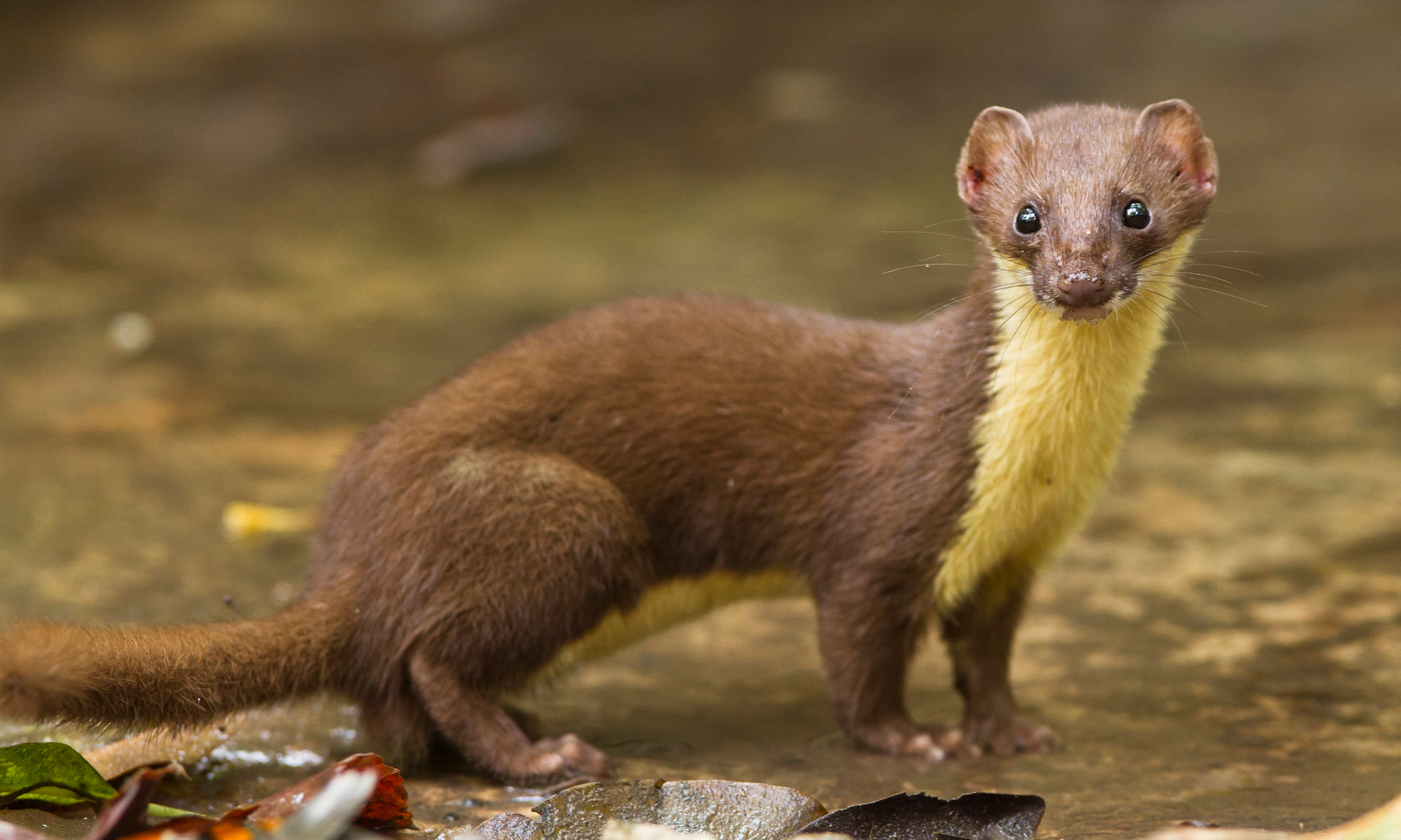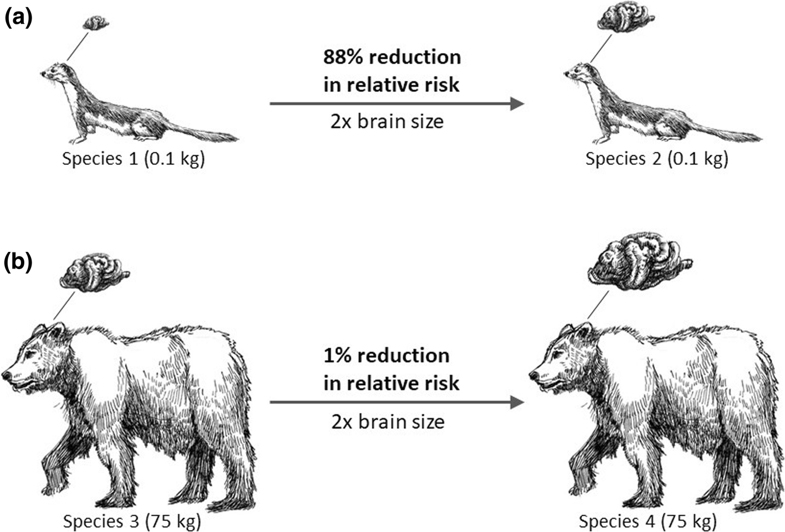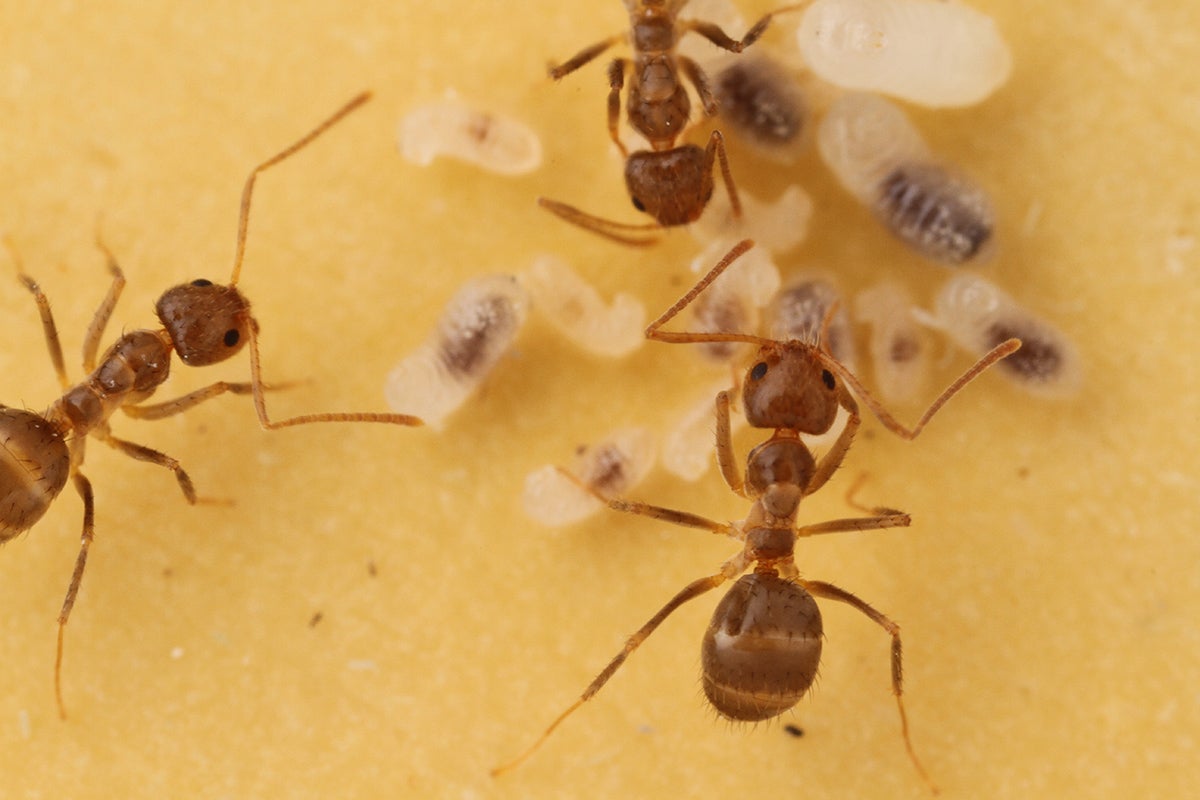A Big Brain Was a Good Thing for Ancient Carnivores, New Study Finds

The yellow-bellied weasel, one of the carnivores in the study, first appeared more than 20 million years ago and still exists today. Photo courtesy of Jack2964.
Over most of the past 40 million years, having a larger brain relative to body size was an advantage for carnivores, increasing the probability that large-brained species survive while other species go extinct, according to a new study from a researcher at the University of Texas at Austin.
Species with a large brain for their body – also called relative encephalization – has been linked with increased behavioral flexibility and capacity. Basically, those animals might be better able to cope with challenges, ensuring the survival of their species.
Eric Abelson, a visiting researcher in the integrative biology department, examined extinction events from 40 million years ago to 12,000 years ago. He looked at which species survived and which ones didn't, with an eye to their relative encephalization for a paper published in the journal Oecologia.
"This study found that species with larger levels of relative encephalization were much less likely to go extinct during a given period of time," Abelson said.
It makes sense that species with a larger behavioral repertoire would survive, but big brains are expensive in terms of energy to keep them running (brain tissue takes more calories to support than nearly any other tissue in the body). Species with bigger brains often face serious tradeoffs to support those relatively bigger brains like having offspring later in life and having fewer offspring in a lifetime.
"An investment in a larger brain than expected has been linked with increased foraging innovations, greater ability to both adapt to novel environments and overcome challenges," Abelson said. "But there is a big tradeoff."
The study looked at 224 carnivore species, from the ancient bear dog, which went extinct more than 33 million years ago, to the wolves that are still around today.
The study also found that for the largest bodied species, those with a bigger relative brain size weren't more likely to survive.
"For the top 10 percent of species in terms of body size, doubling brain size doesn't make that much of a difference," Abelson said. "But I find that a doubling of brain size in the majority of Carnivore species, for example something the size of a weasel, is associated with considerably decreased odds of a species going extinct at any given point in time."

Eric Abelson
In a paper published in 2016, Abelson found that for species alive today, having a bigger brain is a disadvantage for mammals and is correlated with a species endangerment.
"Over the previous 40 million years, when extinctions were rare, having a big brain was an advantage. In modern times, it appears that humans have completely changed the landscape of extinction" said Abelson.
In modern times, any advantage that may be conferred by a large relative brain size may simply be overwhelmed by the intense pressures caused by humans.This may especially be the case when sophisticated cognitive feats can't possibly overcome challenges posed by severely polluted or degraded habitats.
"This finding might give us a peek into the behavioral world of ancient and modern animals," Abelson said. "This work sheds light on the perennial question of why some species go extinct while others thrive."
Funding for the research was provided by the National Science Foundation. Abelson's work was highlighted as student research and was begun at Stanford University; he is currently a visiting scholar at U.T. Austin. He will assume a position as a research scientist in the Department of Integrative Biology in January.



